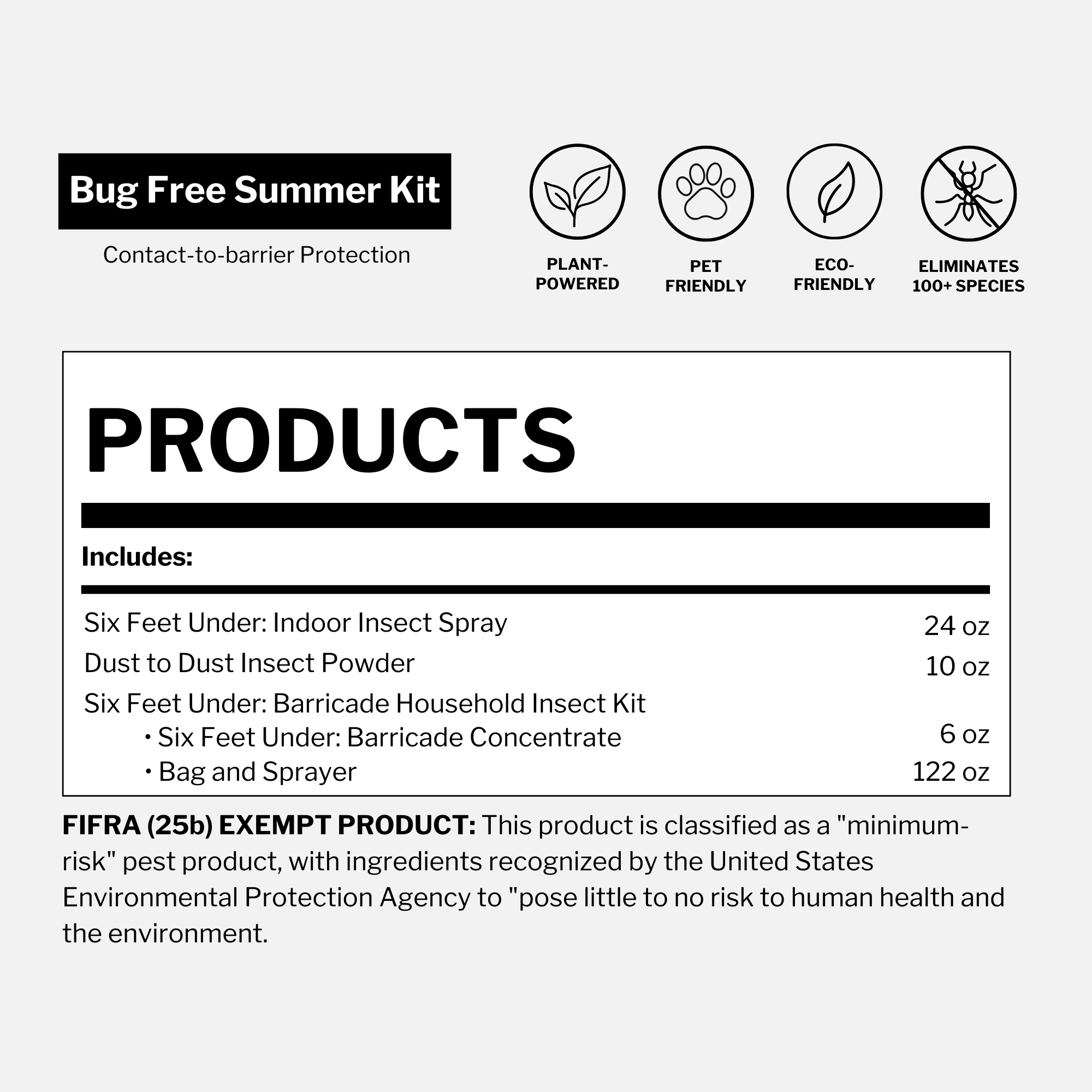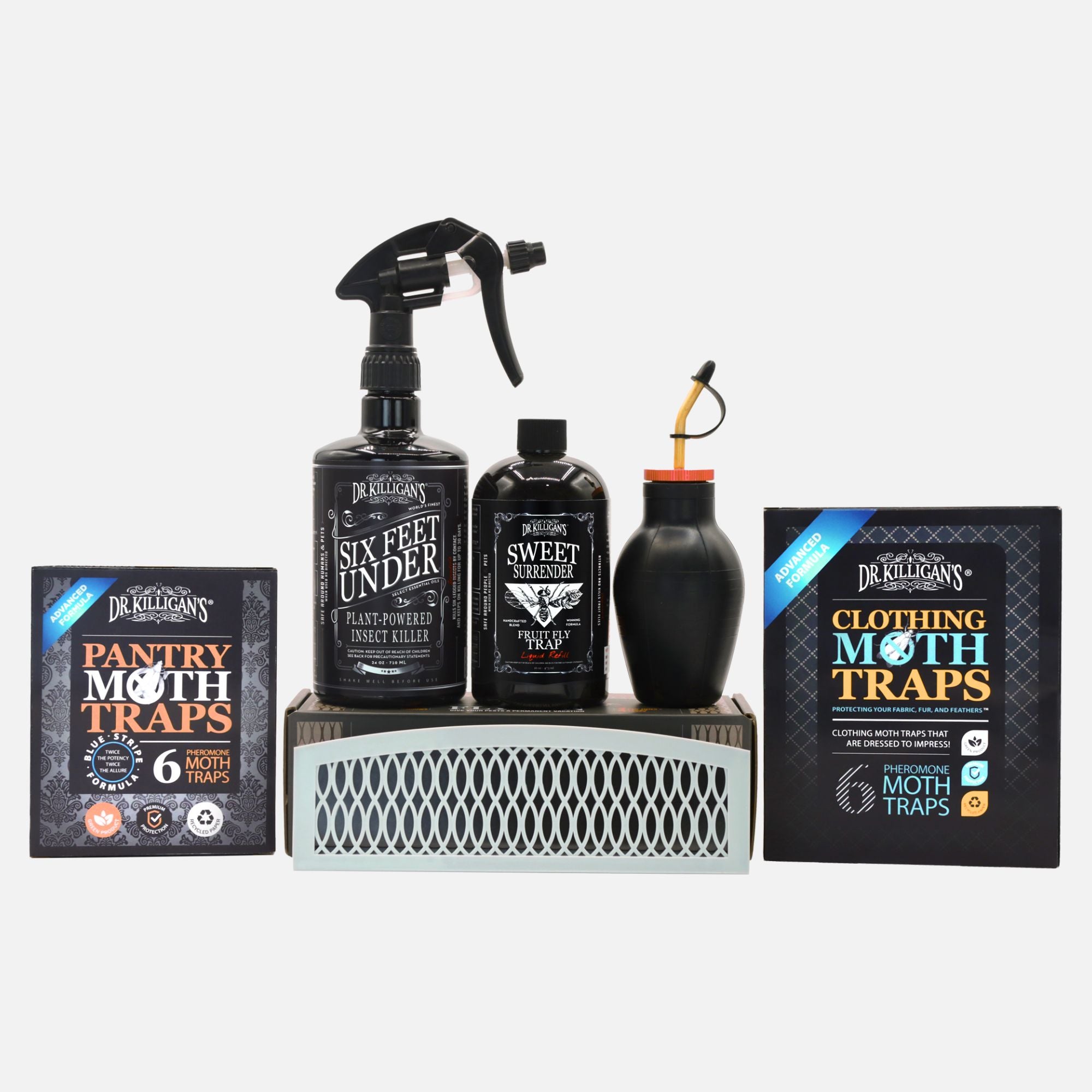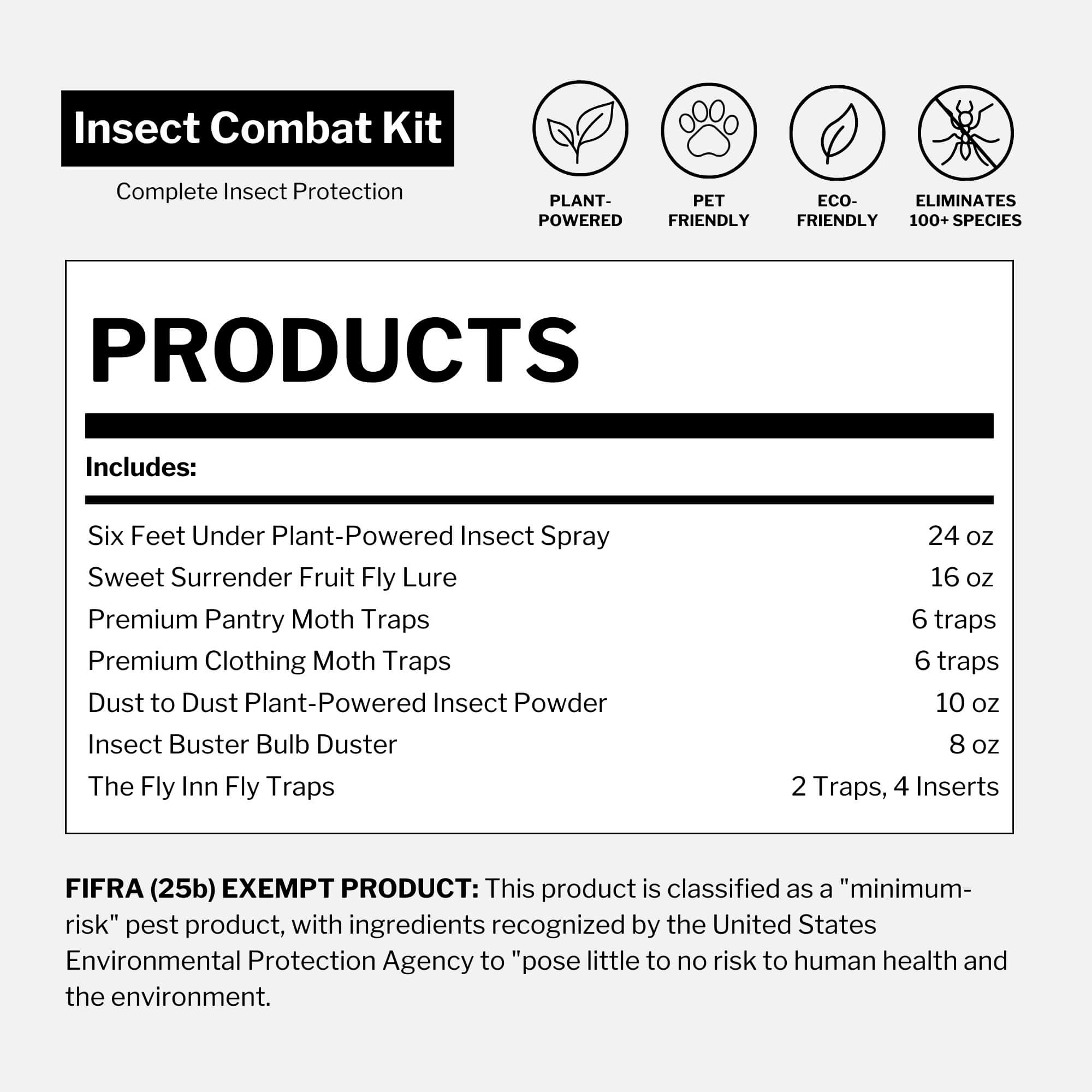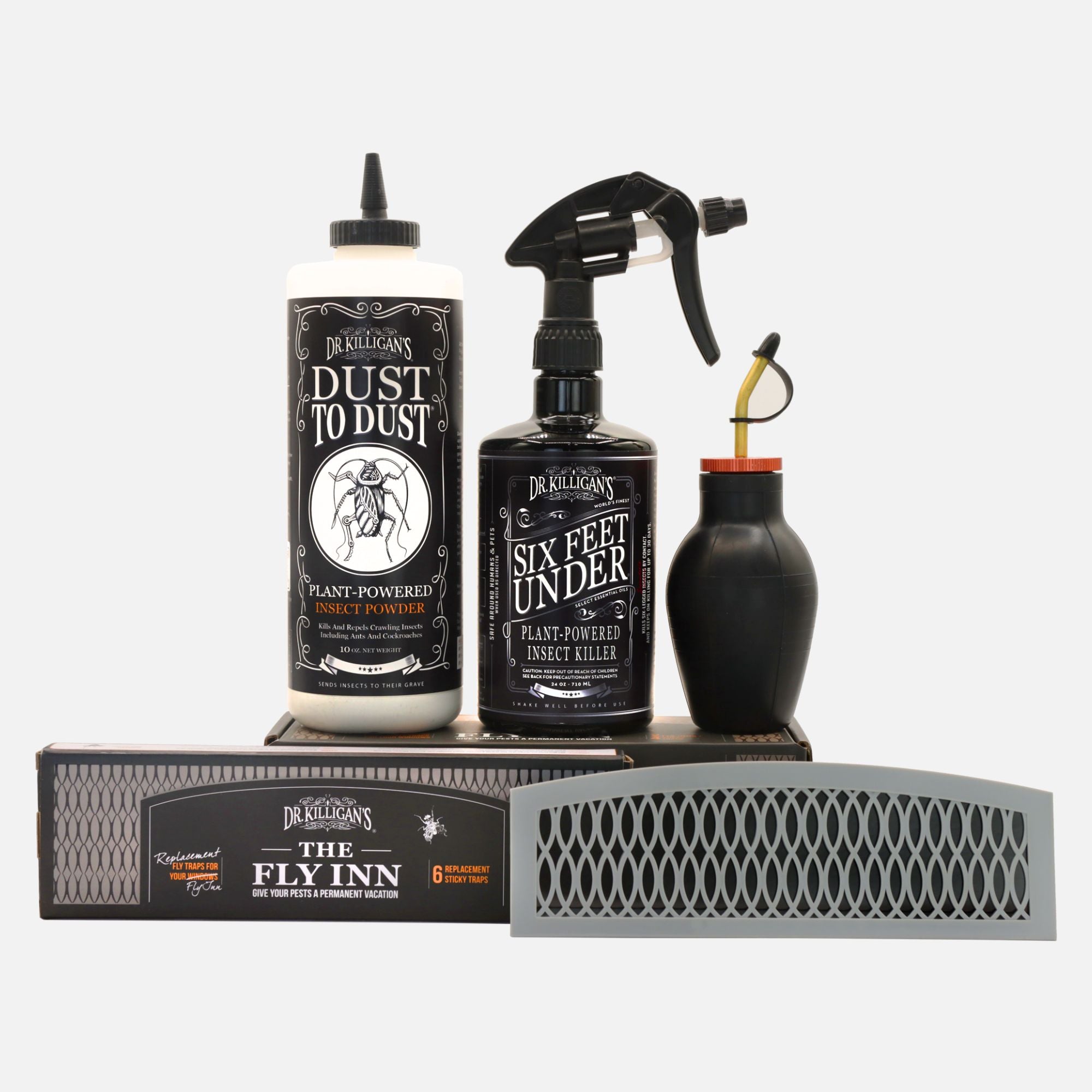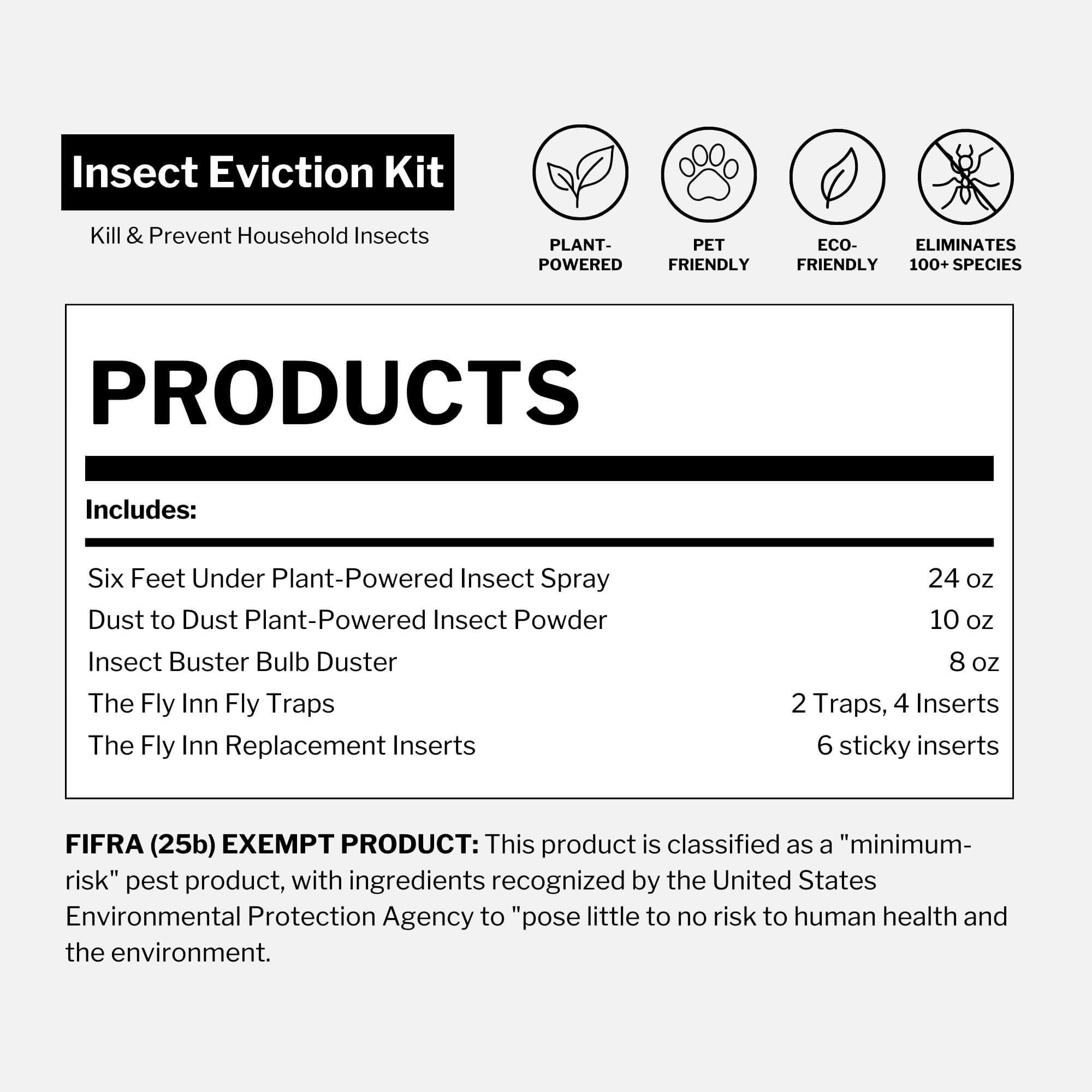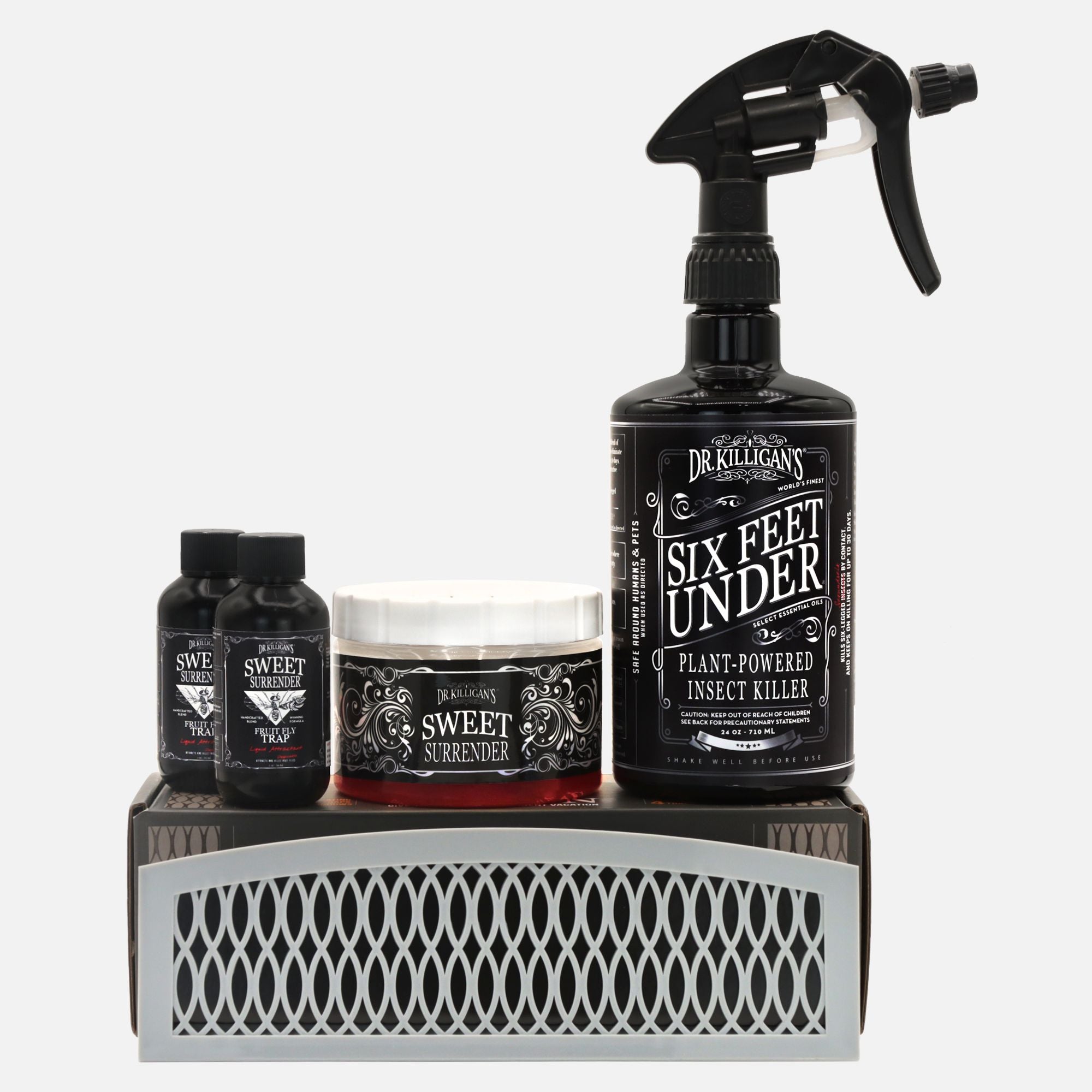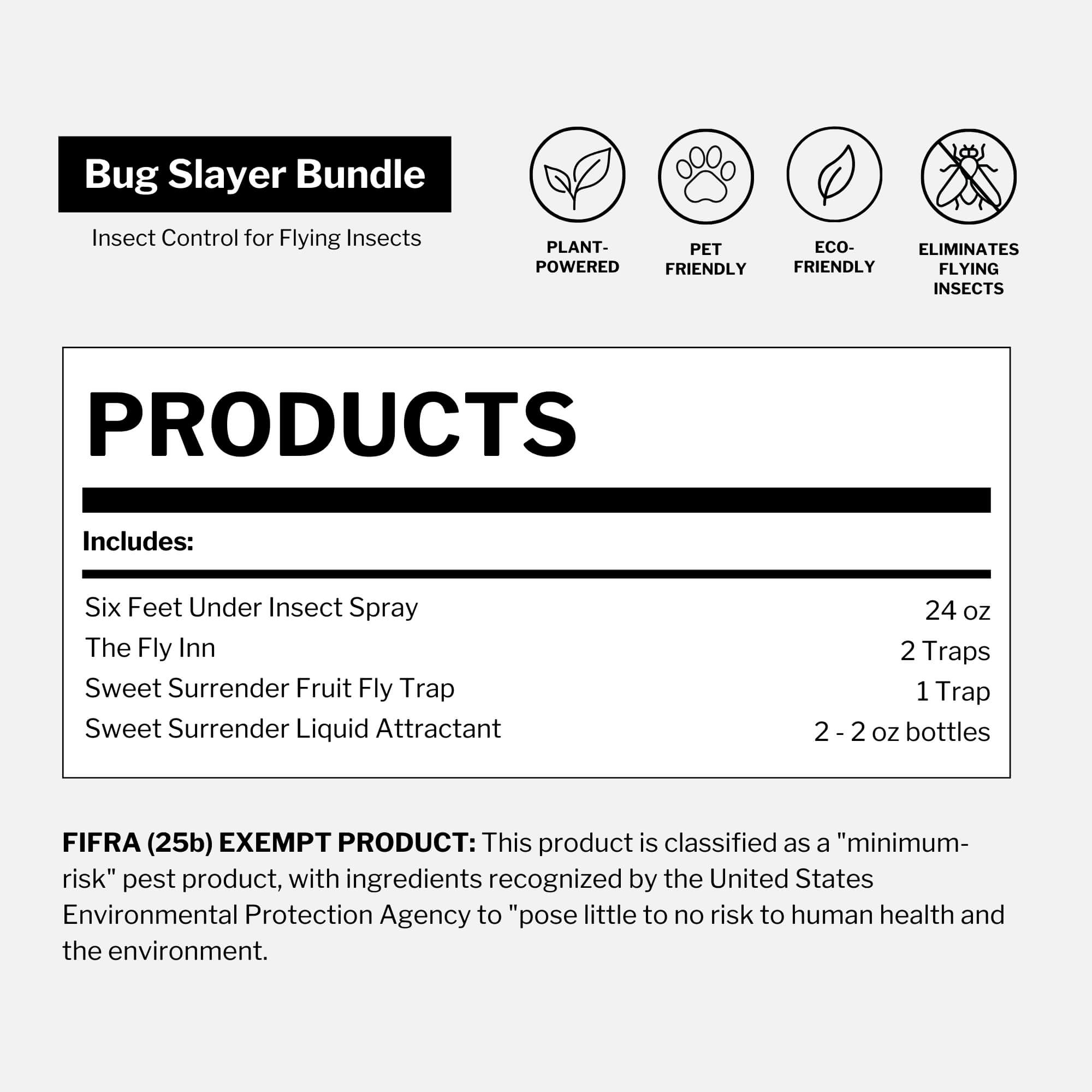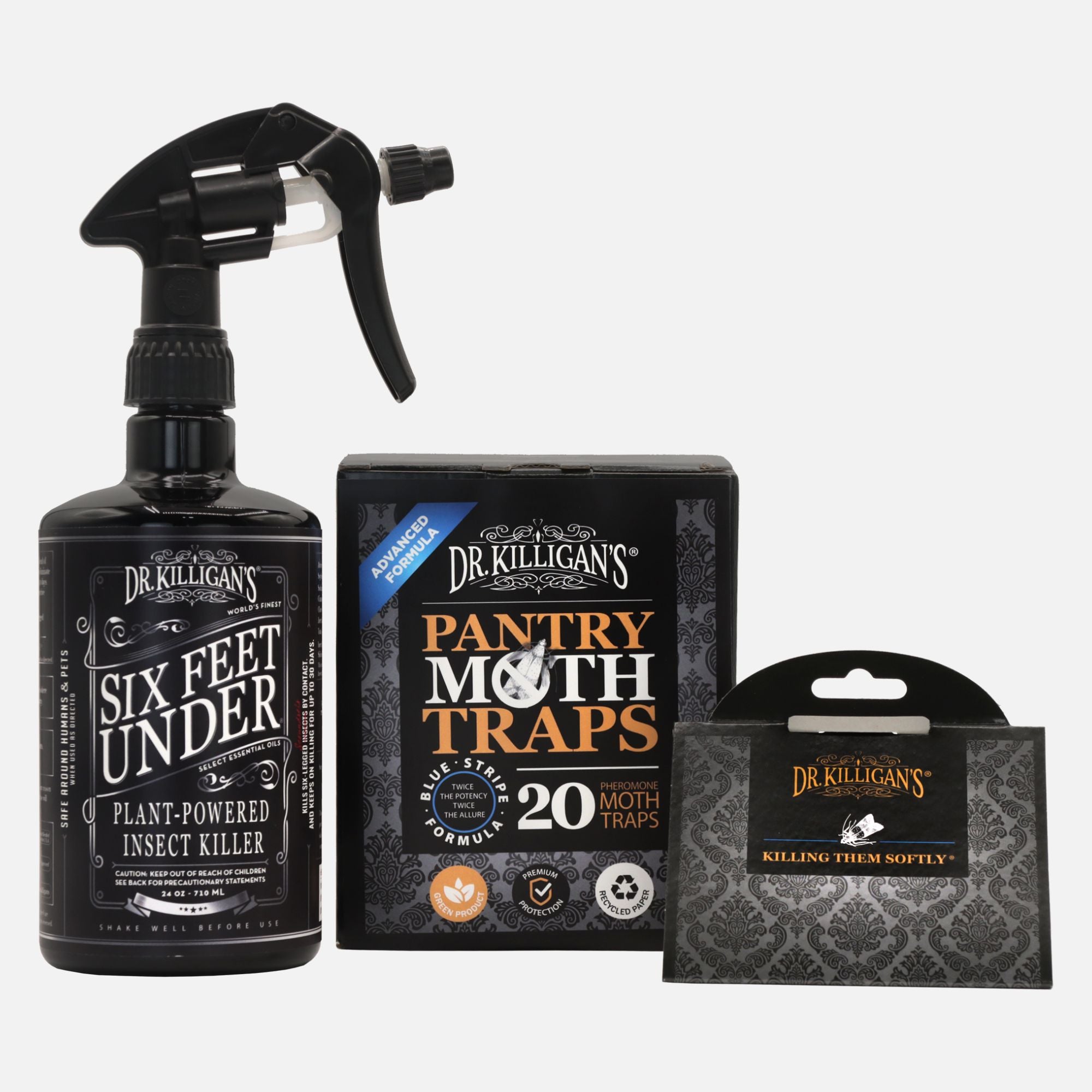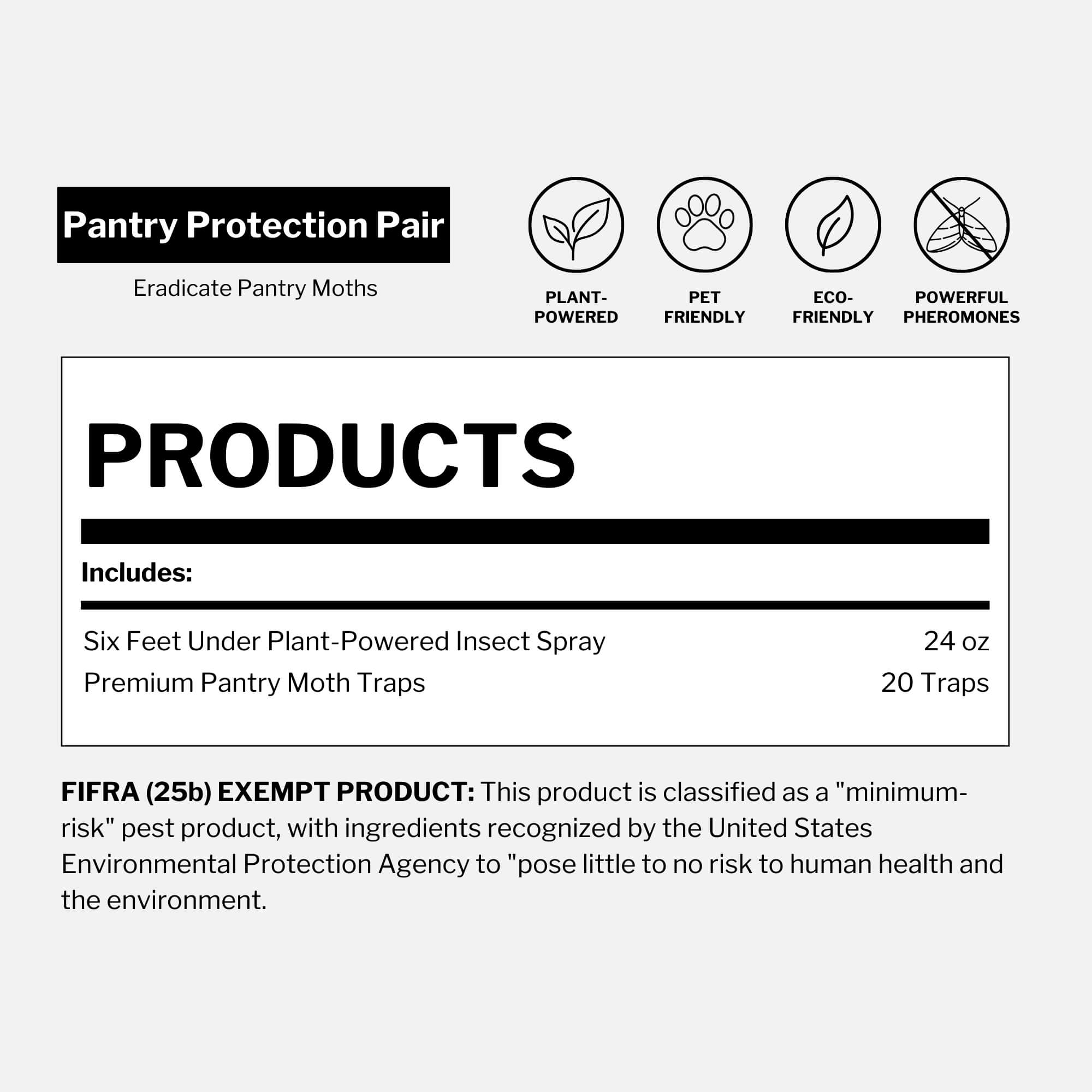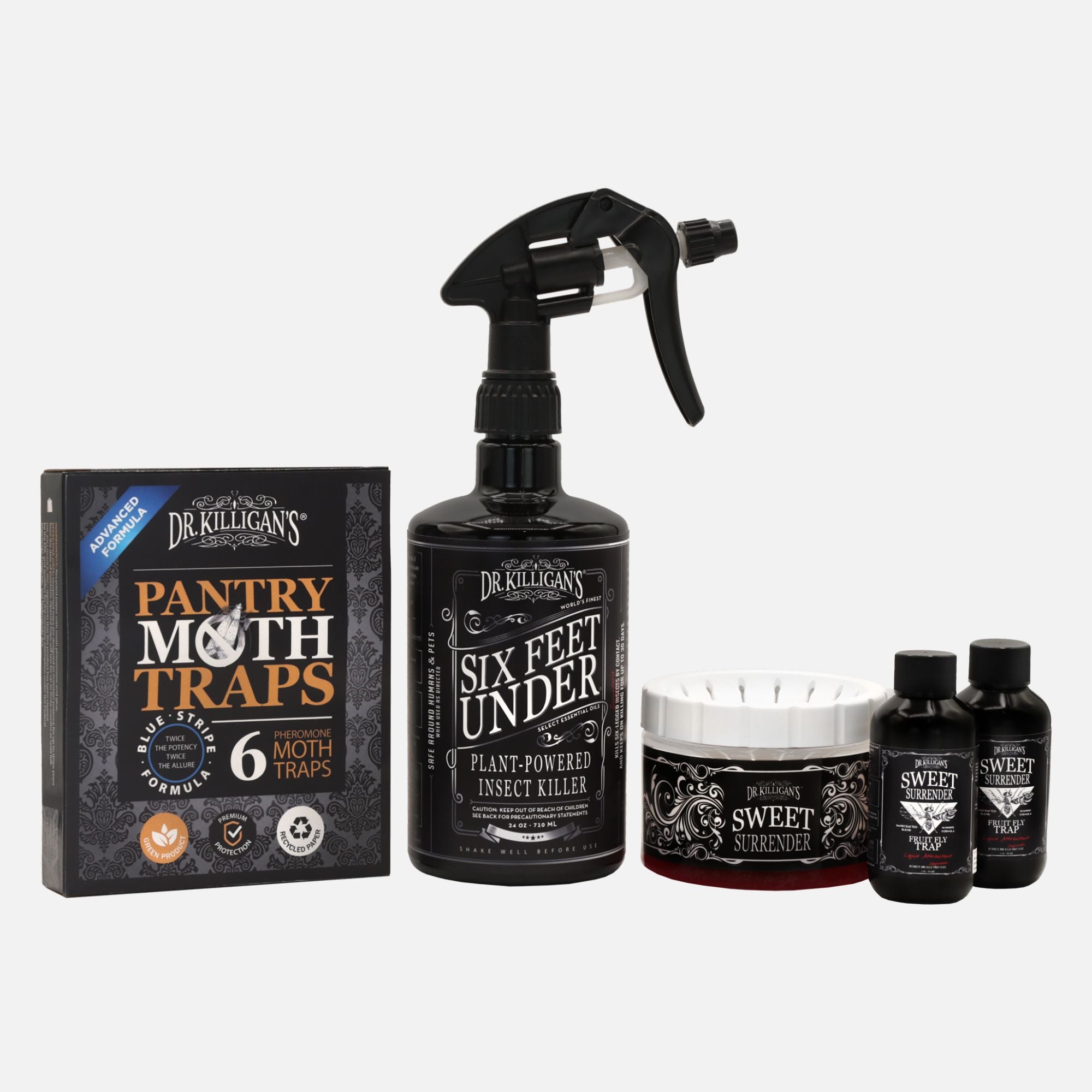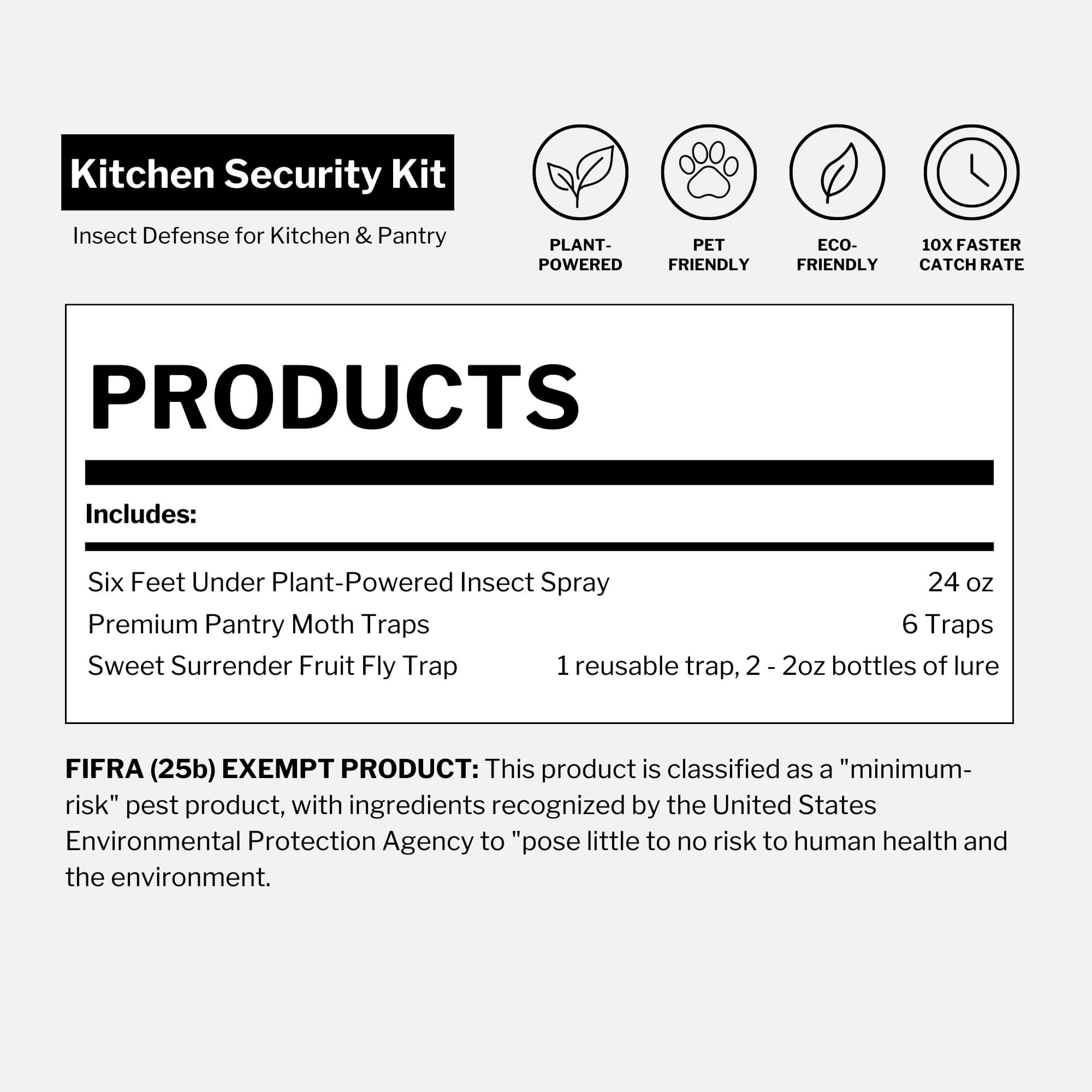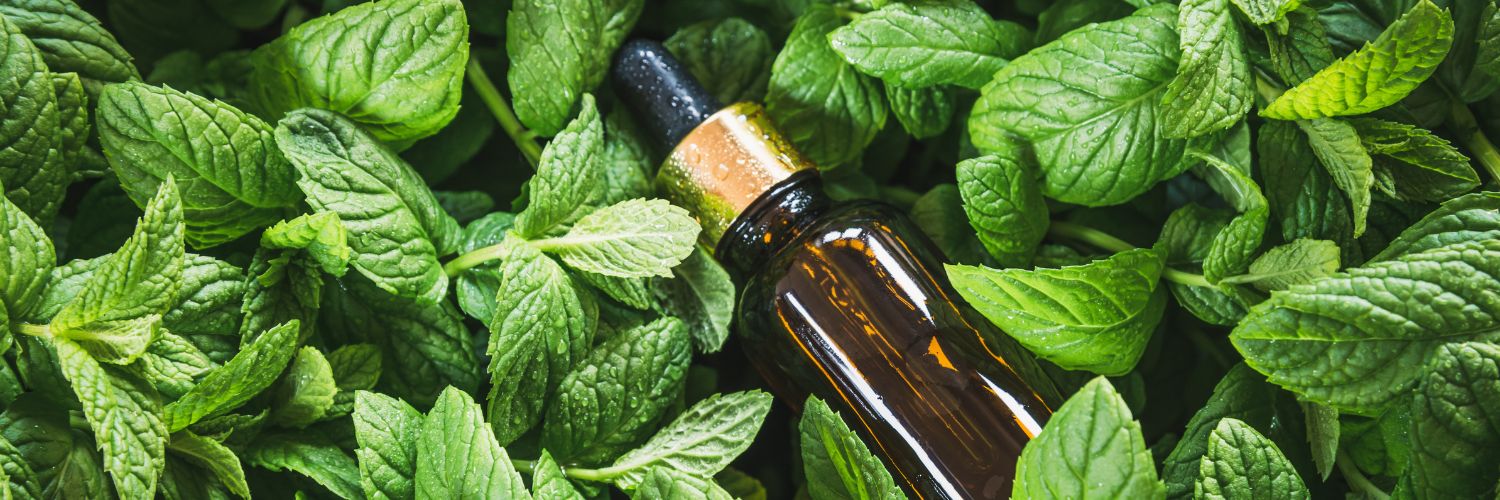Updated on August 28th, 2025
Yes—pet food can attract insects if it’s left exposed or unsealed.
Ants may march across kibble, flies buzz near wet food and even roaches can find their way to leftovers or water bowls. Pantry moths may show up unexpectedly too.
The good news? With pet-safe storage, consistent cleanup and proactive prevention, you can keep your dog and cat food—and your home—insect-free. Read on to discover practical steps and tools to stop ants, flies, moths and more before they invade.
Ants in pet food: How to keep your dog and cat safe

Ants can appear in pet food almost overnight, attracted by spilled pet food, crumbs around bowls or moist food left out too long. Start with basics like keeping bowls clean and storing kibble in sealed containers, then go a step further: ants often sneak in through tiny gaps around doors, windows or utility lines. Sealing these entry points protects your pet’s food and helps prevent other pests from moving indoors.
For extra protection, you can create barriers with pet-safe powders, such as Dr. Killigan’s Dust to Dust—a silica-based insecticide dust that works mechanically rather than chemically, making it safer for use around pets. Dust to Dust stays active as long as it’s visible. You can also use plant-powered sprays like Six Feet Under, which kill ants on contact and provide residual protection for up to 30 days, helping to prevent new ant trails from forming between cleanings.
Important note for pet owners
While plant-based pest control products are designed to be safe when used as directed, they contain small amounts of natural oils (such as clove, cinnamon, rosemary and peppermint). Cats in particular can be sensitive to these oils. Always allow sprays or dusts to fully settle before pets reenter treated areas and never apply products directly to your pets.
Flies in pet food: How to block the buzz
Flies are more than just a nuisance—they pose a real health risk to pets.
Drawn to protein-rich meals like kibble, canned food or raw meat, they can land on your pet’s dish, spread bacteria and even lay eggs that develop into maggots. This risk is especially high in summer, when heat speeds up food spoilage and makes cat and dog food an ideal breeding ground.
Prevention starts with mealtime habits:

- Portion meals wisely. Offer smaller servings your pet will finish quickly rather than leaving food out for hours. Automatic feeders can help regulate portions and reduce exposure.
- Separate food and water bowls. Moisture attracts flies and splashing water onto kibble creates a perfect breeding spot.
- Clean bowls daily. Wash food and water dishes with hot, soapy water to remove residue before it draws pests.
- Control the environment. Keep trash sealed, compost away from feeding areas and use fans outdoors to disrupt flies from hovering over bowls.
For added defense, discreet traps like The Fly Inn can intercept flies near feeding areas. Unlike sticky ribbons or chemical sprays, it blends into your home while quietly breaking the fly cycle.
Roaches in dog food: What attracts them and how to stop them
Cockroaches are opportunistic feeders drawn to dog food because it’s nutrient-dense, protein-rich and often left out in open bowls. The scent lingers, especially in warm or humid areas like kitchens, basements or garages where pet food is often stored. Even trace crumbs or residue can attract roaches and once they find a steady food source, they return nightly. The German cockroach—the most common household invader—is especially persistent and can quickly multiply when food and water are easy to access.
How to stop them:

The best defense is (as forementioned) prevention. Store kibble in airtight containers, clean up spills promptly and avoid leaving food out overnight. Vacuum regularly around feeding areas and seal cracks where pests may enter.
For added protection, target the hidden cracks and crevices where roaches thrive. Dr. Killigan’s Insect Buster makes it easy to apply Dust to Dust Insect Powder into these spaces. This plant-powered powder offers a proven alternative to diatomaceous earth, with in-house testing showing kill times up to 50% faster. When used as directed, it’s safe around pets and people, yet tough on cockroaches, ants, earwigs, beetles and other food-seeking pests.
Moths in dog food? How to stop infestations
If you’ve spotted small moths fluttering near your dog’s kibble, chances are you’re dealing with Indian meal moths, the most common pantry pest in pet food. These moths are attracted to dry, undisturbed food sources where they can hide eggs that later hatch into larvae. Unfortunately, infestations often begin long before food reaches your home—during processing, transport or storage. By the time you see adult moths, hundreds of eggs may already be present.

A single female moth can lay up to 400 eggs in less than two weeks and the tiny larvae that hatch feed directly on dry kibble. Because eggs are only 1–2 hundredths of an inch, they’re nearly impossible to detect. That’s why prevention and early monitoring are so important.
To reduce risk:
- Inspect the packaging before purchase—avoid bags or boxes with tears.
- Store kibble in an airtight container to block access once opened.
- Rotate food supplies and avoid overbuying, since older bags are more likely to harbor hidden eggs.
- Place at least one Pantry Moth Trap in the food storage area, which will catch (and then alert you) to any possible infestations before they get out of control. The sticky pheromone trap will draw in any adult male pantry moths.
Wasps around pet water bowls: Keep your pets safe
Wasps are opportunistic feeders, drawn to the protein and sweet aromas in your pet’s food bowl. These aggressive insects not only scavenge for meat and scraps but can also sting multiple times, posing a painful and potentially dangerous risk to curious pets.
How to reduce the risk:
- Remove food promptly. Avoid leaving bowls outside for long periods, especially in spring and summer when wasps are most active.
- Feed indoors when possible. If feeding outdoors, keep meals short and bring bowls inside afterward.
For added peace of mind, plant-powered sprays like Dr. Killigan’s Six Feet Under can be used around outdoor feeding areas to deter wasps when used as directed. While these sprays aren’t designed for nest removal, they help reduce activity near your pet’s space without relying on harsh chemicals.
Did you know?: Bees stick to nectar and pollen, so you need not worry about bees around your pet's bowl!




